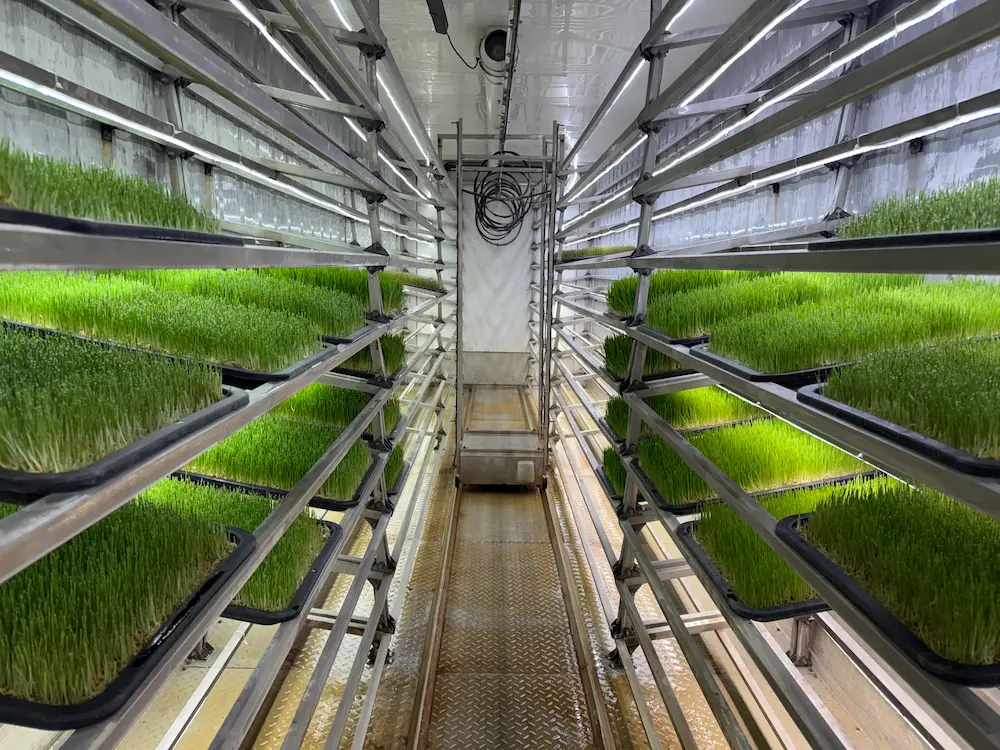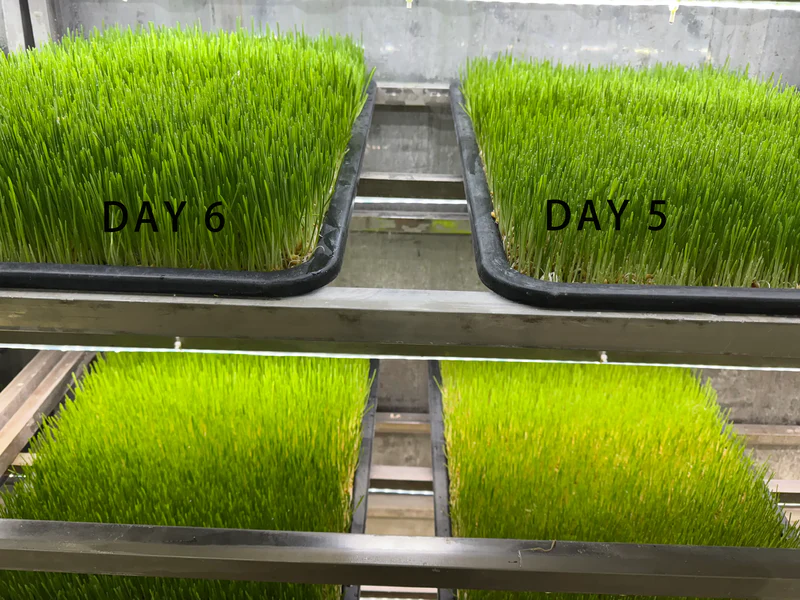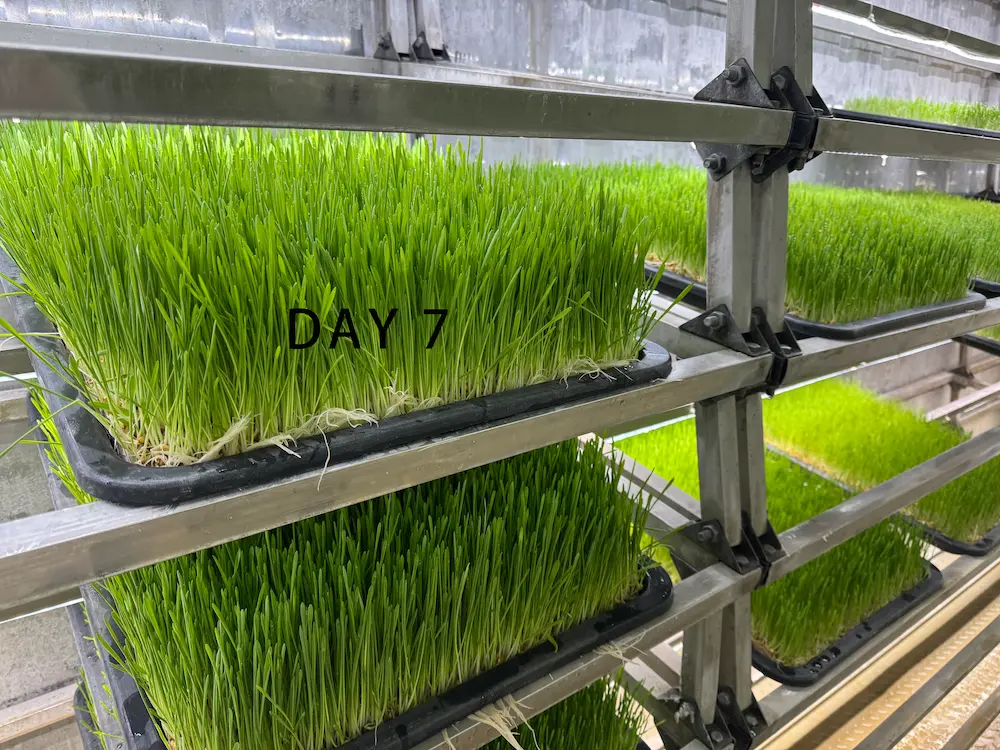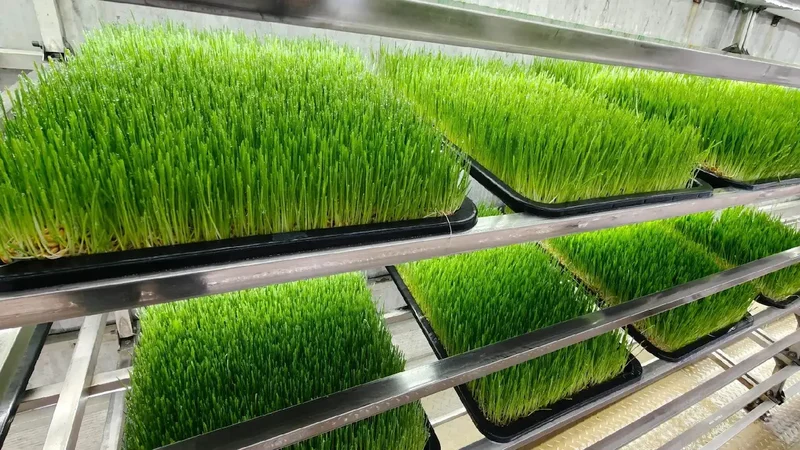
Table of Contents
ToggleWhy Indoor Barley Vertical Hydroponic Farming Could Revolutionize Agriculture
The way we grow food is at a crossroads. With arable land disappearing, water resources dwindling, and a global population projected to hit 10 billion by 2050, traditional agriculture is under pressure like never before. Could the answer lie in a method that stacks barley—a grain with a 10,000-year legacy—inside buildings, growing it without soil in a fraction of the space? Indoor barley vertical hydroponic farming is emerging as a bold solution, promising higher yields, drastic water savings, and resilience against a changing climate. Here’s why this approach could be the future of agriculture, and how it’s already taking root today.
What Is Indoor Barley Vertical Hydroponic Farming?
At its core, this method combines three powerful concepts: indoor farming, vertical stacking, and hydroponics. Barley is grown in layers—think trays or towers—inside a controlled environment like a warehouse or even a repurposed room. Instead of soil, roots dangle into nutrient-rich water, delivered through systems like nutrient film technique (NFT) channels or shallow trays. LED lights mimic sunlight, climate controls keep conditions steady, and the result is a fast-growing crop that thrives without the whims of weather or the sprawl of fields.
Barley, often harvested as sprouts for animal feed in this setup, is a natural fit. Its short growth cycle (sprouts in 7 days, full grain in 60-70 days) and adaptability make it ideal for hydroponics. But this isn’t just about fodder—it’s a stepping stone to rethinking how we produce food altogether.

The Case for the Future: Indoor Barley Vertical Hydroponic Farming Key Advantages
Why bet on indoor barley vertical hydroponic farming? The benefits are stacking up:
- Space Efficiency That Defies Limits
Traditional barley fields stretch across acres—land that’s increasingly scarce as cities expand and soils degrade. Vertical hydroponics flips this model, stacking crops upward. A 1,000-square-foot setup with five tiers could produce 5-10 tons of barley annually, rivaling farms 50 times its size. For urban areas or regions with no arable land, this is a lifeline. - Water Savings for a Thirsty World
Agriculture consumes 70% of global freshwater, but hydroponics slashes that to just 5% of traditional use. Water circulates in a closed loop, delivering nutrients directly to barley roots and recycling the rest. Studies show it takes just 3-4 liters to grow a kilogram of hydroponic barley fodder, compared to 70-100 liters outdoors. In a future where water wars loom, this efficiency is revolutionary. - Harvests That Ignore the Calendar
Outdoor barley depends on seasons—plant in spring, harvest in summer. Indoors, with LEDs providing 14-16 hours of light and temperatures held at 65-75°F, you can grow year-round. Sprouts for feed are ready in a week; grain varieties can cycle every 2-3 months. That’s 4-6 harvests a year, no matter the drought or frost outside. - A Cleaner, Greener Approach
Indoors, pests don’t stand a chance, cutting pesticide use to zero. Local production—think barley sprouting next to a brewery or farm—slashes transport emissions too. The carbon footprint shrinks, and the barley stays pure, a win for health and ecosystems. - Nutritional Powerhouse
Hydroponic barley sprouts pack a punch—richer in fiber, amino acids (like aspartic acid), and fatty acids than traditional grain, according to research from ScienceDirect. For livestock, this means better feed; for innovators, it hints at human food potential, like barley-based superfoods. - Climate-Proof Production
Wildfires, floods, and heatwaves are battering traditional farms. Indoor hydroponics shrugs them off, thriving anywhere—deserts, cities, or frozen plains. It’s a hedge against climate chaos, ensuring barley keeps flowing when fields fail.
Real-World Proof and Potential
This isn’t just theory. In Ireland, a beef farmer beat a fodder crisis by sprouting 350-400kg of hydroponic barley daily, as reported by The Beef Site. Companies like FarmBox Foods are scaling it up, offering stackable hydroponic units that churn out high yields with less labor. A single setup could match a traditional farm’s output in a footprint the size of a living room. With barley’s global demand—over 150 million tons yearly for beer, feed, and food—this method could fill critical gaps.
Beyond animal feed, there’s untapped potential. While sprouts dominate now, growing barley to grain indoors could unlock new food streams—think local malt for craft brewers or flour for urban bakeries. It’s a frontier ripe for exploration.
The Challenges: What’s Holding It Back?
No revolution comes without hurdles:

- Energy Costs: LEDs and climate systems need power. A small setup might draw 200-300 watts per square meter, but solar panels and efficient lights are cutting this down.
- Upfront Investment: Building a system—trays, pumps, lights—can cost thousands, far more than planting a field. Yet, savings on water, land, and labor (plus higher yields) can break even over time, especially in high-cost areas.
- Skill Required: Balancing pH (5.5-6.5), mixing nutrients, and maintaining equipment takes know-how. Beginners face a learning curve, though guides and automation are leveling the field.
Advancements are closing these gaps. AI-driven monitoring, cheaper LEDs, and renewable energy integration (like FarmBox’s solar options) are making it more accessible every year.
How to Start Your Own: A Practical Guide
Want to try it? Here’s how to launch your own indoor barley vertical hydroponic farm:
- Pick a Space
Start small—a closet or garage with power and water access. For scale, lease a warehouse. Ventilation is key to avoid mold. - Build the System
- Trays or Towers: Stackable trays (DIY with PVC) or NFT channels work well. Aim for 4-6 layers.
- Pump: A submersible pump circulates nutrient water from a reservoir below.
- Cost: A basic setup starts at $200-$500; commercial units run higher.
- Source Seeds
Use high-quality barley—two-row for malting potential, hulless for easier sprouting. Soak 4-6 hours to kick off germination. - Light and Climate
- LEDs: Full-spectrum, 18-24 watts per square foot, set for 14-16 hours daily.
- Conditions: 65-75°F, 50-70% humidity. Add a fan for airflow.

- Nutrients and Water
Mix a hydroponic nutrient solution (20-10-20 N-P-K is a good start). Keep water pH at 5.5-6.5—test with a $10 kit. - Grow and Harvest
Spread soaked seeds in trays (1-2 kg per square meter). Sprouts are ready in 7 days at 6-8 inches. For grain, wait 60-70 days until heads turn golden. Dry and store. - Scale Up
Monitor with sensors, automate watering, and tweak light cycles. Each harvest teaches you more.
Why It’s a Game-Changer
Indoor barley vertical hydroponic farming isn’t a replacement for fields—it’s a partner. It tackles land and water scarcity, boosts local supply chains, and adapts to a world where traditional farming alone won’t suffice. Economic studies, like one from Scirp, show it can cut feed costs by 42% for livestock, while its scalability suits everything from home setups to industrial hubs.
At Zirhero, we see this as more than a trend—it’s a movement. As energy costs drop and tech advances, this method could sprout across cities and rural edges alike, feeding animals, inspiring human foods, and proving agriculture can thrive anywhere.
Join the Future
Ready to dig in? Start small with a tray at home, or explore companies like FarmBox for bigger dreams. Share your thoughts below—how do you see this shaping tomorrow’s food? At Zirhero, we’re all about growing ideas, one innovative stalk at a time.
